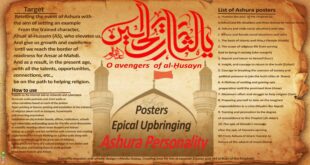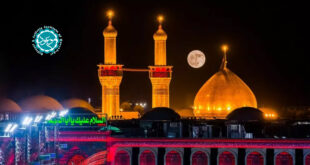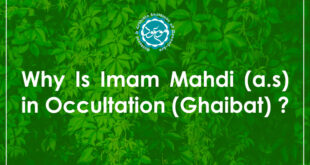10. The First Allegiance of Aqaba
On returning to Yathrib the group started preaching Islam among the local people and made some progress. The next year a 12-member delegation of Yathrib Arabs came to Makkah and met the Messenger of Allah at a place called ‘Aqaba’ and swore allegiance to him as Muslims. On returning to their city they started inviting people towards truth. Thus Islam began to take roots and spread in Yathrib which was destined to be the Prophet’s seat of power and would eventually become famous as Madina – the shortened form of Madinat-an-Nabi (city of the Prophet).
11. The Second Allegiance of Aqaba
During the next year of pilgrimage following the first allegiance, 10 men and 2 women from Yathrib called on the Prophet at the same place of Aqaba and swore allegiance to him, promising to defend and spread Islam. The historic meeting was attended by the Prophet’s uncle Abbas bin Abdul Muttalib as a witness to the allegiance. The event was instrumental in spreading belief among a greater part of Yathrib citizens, who rallied to the cause of Islam as ‘Ansar’ (Helpers). Makkan Muslims to protect their beliefs now gradually started migrating towards Yathrib.
12. Conspiracy to Assassinate the Prophet
The Makkan Jahiliyah alarmed at the growing impact of Islam and their abject helplessness to contain its radiant rays conspired to assassinate the Prophet. Moreover, the death of Abu Talib that devoted guardian of infant Islam had removed an obstacle from their path, emboldening the haughty ignorants to plot Muhammad’s [s] murder. But Makkan arrogance had reckoned the whole thing without taking into account the Omnipotent Creator Who is always watching over peoples’ words and deeds and is even aware of the thoughts they entertain.
The Almighty Allah sent Gabriel to inform the Prophet of the dirty plot. As commanded, the Prophet asked his faithful cousin Ali [a] to sleep in his bed that night, and himself set out for Yathrib taking along one of his companions, the aged Abu Bakr, whom for some reasons he considered it unwise to leave behind at Makkah. That epoch-making night which marked a turning point in the message of Islam, Imam Ali [a] lay on the Prophet’s bed as calm and composed as ever, that even the scores of infidels besieging the house and peeping through the windows, not the least suspected the real identity of the sleeper.
It is related that each Makkan tribe or clan was represented in the gang of conspirators hovering around the abode of divine revelation in their vain bid to extinguish the eternal light, even Muhammad’s [s] own infidel uncle Abu Lahab was there claiming to represent the Bani Hashim.
At last before the break of dawn, the unholy gang burst into the Prophet’s house, full of confidence to accomplish their dirty deed. But their all-night vigil proved as worthless as their stone-made gods, for to their utter surprise, the figure which calmly emerged from the covers and stood facing them was the Lion of Allah, Ali [a], and not whom they were seeking.
Frustrated in their ungodly efforts, the infidels asked Ali the Prophet’s whereabouts, to which they received the crisp and to the point reply: “Did you entrust him to me?” Thus Almighty Allah protected His Prophet from the evil of the idolaters, and escorted him safely away from their very midst, without the blind-hearted Arabs perceiving the least.
The event has another significance, for it brings into sharper focus the personality of Imam Ali [a] and his selfless devotion to the cause of Islam and to his cousin’s life. He dauntlessly agreed to sleep on the Prophet’s bed risking his life and limbs, If the late Abu Talib’s personality had been until recently, a deterring factor for the Makkan polytheists from harming the Prophet, now his son the brave Ali had ably filled up the vacuum, showing readiness to sacrifice his own life for Muhammad’s [s] sake. Almighty Allah rewarded Ali’s selfless spirit of devotion by revealing the following verse of the Qur’an:
“And among people is he who sells himself to seek the pleasure of Allah…”
Holy Qur’an (2:207)
Thus the Almighty brought the stratagem of the plotters to nought. By the time the Makkan infidels recovered from their shock, the Prophet was safely out of Makkah and on his way to Yathrib. Cautious, not to be overtaken by the conspirators lest they start the chase, the Prophet along with his companion Abu Bakr, took refuge in a cave of a mountain called Thawr, three miles south of Makkah. The Quraish hastily set out to trace the Prophet, and a party of unbelievers arrived at the very cave of Thawr. Strangely, just as the idolaters neared the place, Abu Bakr, perhaps sensing danger suddenly started crying. His unwarranted cries, had not Almighty Allah descended tranquillity on him that very moment making him tight-lipped, would have been enough to lead the Quraish party to the Prophet’s hide-out, periling the whole brave selfless episode. The polytheists arrived at the cave’s mouth with an expert tracker and looked everywhere around, but by Allah’s command a spider had spun a cobweb over its entrance and a bird had come and laid eggs, presenting the semblance of an undisturbed virgin spot, where no soul had ventured of late.
Satisfied that no one was in the cave, the unbelievers turned back giving up all hope of finding the Prophet. Thus the Prophet safely proceeded to Madina. The Hijra (Migration) to Madina also marks the start of the Muslim Lunar Calendar and according to historians it took place on the 1st of Rabi-al-Awwal.
Yathrib – A Brief Description
It was an old oasis town with plenty of springs and wells and the brush surroundings abounded with date palms, vineyards and orchards of pomegranates and other fruits. Situated 450 kilometres north of Makkah it was inhabited by the idol worshipping Arab tribes of Aws and Khazraj.
Certain Jewish tribes like Bani Quradha, and Bani Mugheer and Bani Qainqa’e also dwelt in Madina and had migrated to the town centuries before, to await the last Messenger of Allah, whom they found foretold in their Scriptures. Deep enmity and a constant state of internecine warfare had sapped the energies of the two idolatrous Arab tribes, who had devastated each others’ wealth and properties, in their blind hatred. In addition there was no love lost between the Arab and Jewish tribes. The Jews flaunting their sacred books used to mock the pagan Arabs, saying that soon a Prophet will emerge in Arabia and come to Yathrib and will put an end to their wicked ways.
But strangely enough when Prophet Muhammad [s] did finally proclaim his Prophethood and emigrate to Yathrib, it were the Arab tribes of Aws and Khazraj who renounced idolatry and accepted Islam, while the chauvinistic Jews, whose forefathers had come to Arabia, for this very occasion, rejected the Prophet. Their pretext was he was an Arab descended from Prophet Abraham’s [a] elder son Ishmael [a], rather than Isaac [a] and therefore unacceptable to the racist Jews.
On the other hand, on Prophet Muhammad’s [s] historic entrance into Yathrib, the Aws and Khazraj recalling the Jews’ prophecy hastened towards him and accepted Islam, burying once and for all the bloody hatchet of tribal rivalry. Almighty Allah filled their hearts with unity, which Arabia had never known before, and gathered them under Islam’s majestic banner. The Jews, treacherous as ever, turned away from Prophet Muhammad [s] as they had rejected and betrayed Prophet Jesus [a] 6 centuries ago.
[9] Beit-ul-Maqdis or simply Al-Qods in today’s Zionist occupied Jerusalem.
Important Events of Madina
The Prophet’s entry into Madina ushers in a new phase for the divine message. Islam gaining fresh followers began to assert its strength and soon started to spread out over the four corners of the Arabian Peninsula.
In the previous chapters we have already noted that the Prophet was 53 years of age at the time of his auspicious migration. In Madina he spent the remaining 10 years of his life and it was here that other brilliant aspects of his immaculate personality became fully manifest. The divine call now entered a decisive stage and many important events took place in Madina, which eventually laid a firm foundation for the spread of Islam to the furthest reaches of the globe. Here we shall study some of the major landmarks in the life of Prophet Muhammad [s] and Islam at Madina.
1. The Building of the First Mosque
The entry into Madina was followed by the building of the mosque, the first-ever for the Muslims who had just emerged from years of oppression in Makkah. It was one of the most important landmarks for Muslims who now had a centre of their own for open uninhibited gatherings, a school for learning the Qur’an and a headquarters for receiving necessary instructions from their leader. Gone were the days of secret underground meetings in Makkah, where the fear of persecution had always weighed heavily for the faithful. Yathrib which from now onwards was Madinat-an-Nabi (city of the Prophet) or Al-Madina al Munawwara (illuminated city), provided a free open atmosphere for the growth of the true faith.
 Mouood Mouood English Edition
Mouood Mouood English Edition




